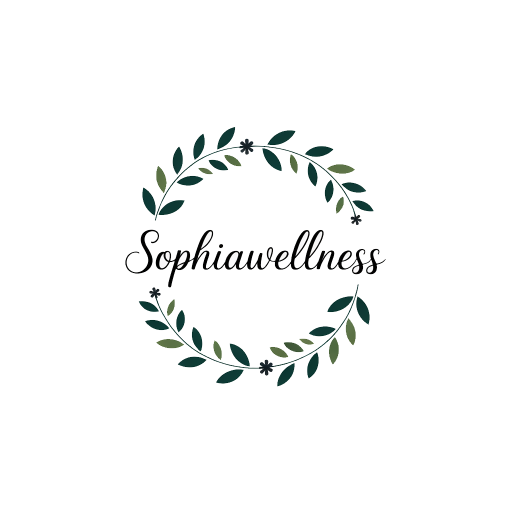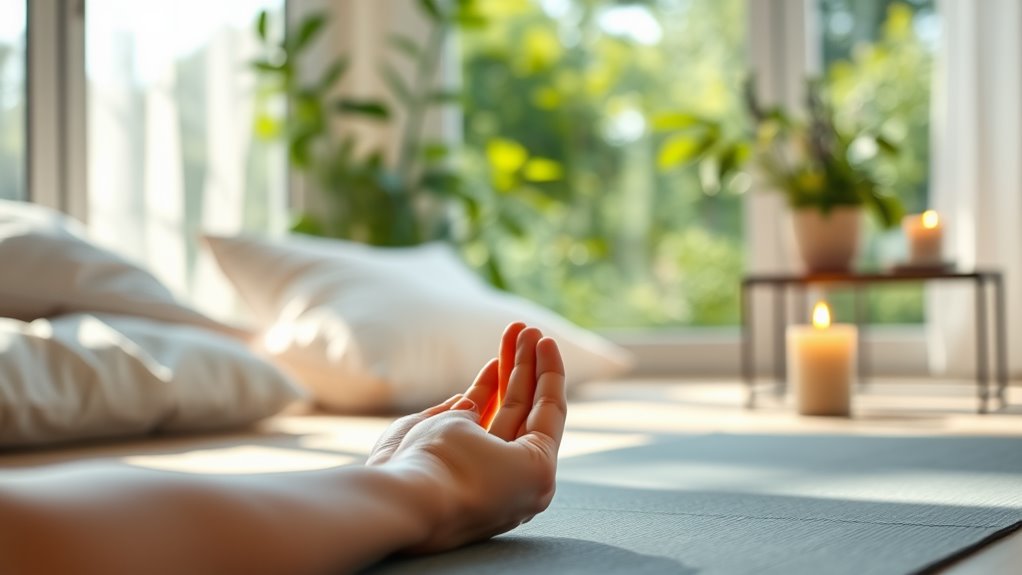5 Easy Breathing Techniques That Will Calm Your Nerves Instantly
To calm your nerves instantly, try these five easy breathing techniques. Start with nose breathing to filter air and enhance oxygen exchange. Use box breathing (4-4-4) to reduce stress and improve focus. Alternate nostril breathing balances your mind, while mindfulness meditation keeps you present and aware. Finally, practice the relaxing breath (4-7-8) for deep relaxation. Each method helps you manage anxiety effectively, so it’s worth exploring all of them for greater peace.
Key Takeaways
- Box Breathing (4-4-4): Inhale, hold, exhale, and pause for four seconds each to activate relaxation and enhance focus.
- Alternate Nostril Breathing: Close one nostril at a time, promoting balance and reducing anxiety through smooth, equal breaths.
- Relaxing Breath (4-7-8): Inhale for 4 seconds, hold for 7 seconds, and exhale for 8 seconds to stimulate relaxation and reduce stress.
- Mindfulness Meditation: Focus on the present moment while incorporating deep breathing to significantly lower stress levels and improve mood.
- Nose Breathing: Breathe through your nose to filter air and promote nitric oxide production, enhancing relaxation and overall well-being.
Nose and Mouth Breathing
When you consider the impact of breathing techniques on your overall well-being, the choice between nose and mouth breathing becomes essential.
Nose breathing filters toxins and humidifies air, enhancing oxygen exchange and promoting nitric oxide production, which boosts vascular health. It encourages a calm, meditative state, reducing stress through slower, more controlled breaths. Deep breathing is a key predictor of longevity, making nasal breathing even more beneficial for overall health. Additionally, practicing mindfulness techniques can further amplify the calming effects of nasal breathing.
In contrast, mouth breathing leads to quicker, shallower breaths, increasing stress and potentially causing respiratory issues. It bypasses the natural filtration and humidification processes, resulting in dry air entering your lungs.
Box Breathing (4-4-4)
Nose breathing sets a solid foundation for effective relaxation techniques, and one of the most powerful methods you can practice is box breathing. This technique, often called 4-4-4 breathing, enhances your mental clarity and reduces stress. By focusing on your breath, you shift your body from a state of tension to one of calm. Additionally, incorporating these techniques with mindfulness practices can amplify their benefits for overall well-being.
-
Reduces Stress and Anxiety: Activates your parasympathetic nervous system for relaxation.
-
Improves Focus: Clears your mind, enhancing concentration.
-
Promotes Better Sleep: Aids in moving into sleep, beneficial for insomnia. Regular practice encourages deep breathing to become a natural part of your daily routine.
To practice, sit comfortably, breathe in for four seconds, hold for four seconds, exhale for four seconds, and pause for four seconds. Regular practice can solidify these benefits in your daily life.
Alternate Nostril Breathing
Alternate Nostril Breathing, or Nadi Shodhan Pranayama, provides a simple yet effective way to calm your mind and enhance your focus. This technique involves closing one nostril at a time, allowing you to breathe through the other, which harmonizes your brain’s hemispheres and reduces anxiety. Regular practice can release stress and promote relaxation, making it an essential part of your mindfulness routine. Additionally, this technique is known to improve focus and increase overall mental clarity.
To practice, sit comfortably with a straight spine, using your thumb to close your right nostril and your ring finger for the left. Begin by exhaling through one nostril, then inhaling through the other, maintaining smooth and equal breaths. Aim for 3 to 9 rounds, ensuring you finish with an exhalation on the left side. Regular practice not only promotes relaxation but also improves respiratory function, making it a powerful tool for mastery.
Mindfulness Meditation
Mindfulness meditation offers a powerful way to enhance your mental clarity and emotional resilience, as it encourages you to focus on the present moment without judgment. This practice cultivates awareness and can greatly reduce stress. By regularly engaging in mindfulness, you’ll find improvements in your mood and an increased ability to cope with challenges. Research indicates that deep breathing techniques can significantly enhance the benefits of mindfulness meditation.
-
Basic Mindful Breathing: Focus on your natural breath flow, feeling sensations without trying to control them.
-
100-Breath Practice: Count from 1 to 100 to anchor your attention in the present.
-
Calming Breath Method: Inhale for four seconds and exhale for eight seconds to soothe your nervous system. Mindful breathing exercises can trigger the parasympathetic nervous system, further enhancing relaxation.
Integrating mindfulness into your routine can transform your approach to stress and enhance your overall well-being.
Relaxing Breath (4-7-8)
While you may often feel overwhelmed by stress and anxiety, the Relaxing Breath technique, also known as the 4-7-8 method, can help you regain a sense of calm.
Developed by Dr. Andrew Weil, this pranayama practice involves inhaling through your nose for 4 seconds, holding your breath for 7 seconds, and exhaling through your mouth for 8 seconds, creating a whooshing sound.
Sit comfortably, keeping your back straight and your tongue against the roof of your mouth. For beginners, you can start with shorter cycles.
This technique stimulates your parasympathetic nervous system, slowing your heart rate and promoting relaxation. Breath awareness is essential in this practice, as it connects you to the present moment and enhances the effectiveness of the exercise.
With consistent practice, you’ll find it effective in managing anxiety and enhancing your overall well-being.
Frequently Asked Questions
How Long Should I Practice Breathing Techniques Each Day?
Wondering how long to practice? Start with just 2-5 minutes daily, gradually extending to 10-20 minutes as you improve. Consistency’s key—aim for multiple sessions throughout your day to access deeper relaxation and focus.
Can Breathing Exercises Help With Panic Attacks?
Yes, breathing exercises can greatly help with panic attacks. They lower your heart rate, reduce hyperventilation, and promote relaxation. By practicing these techniques, you regain control, easing anxiety and enhancing your overall well-being.
Are There Any Risks Associated With Breathing Techniques?
Sure, breathing techniques can be beneficial, but they’re not without risks. If you’ve got health concerns, it’s essential to consult a doctor first. Mastering safe practices will guarantee you enjoy the benefits without complications.
Can Children Practice These Breathing Techniques?
Yes, children can definitely practice these breathing techniques. They’re simple and adaptable, helping kids manage stress and anxiety effectively. Engaging activities like bubble blowing and finger breathing make it enjoyable and beneficial for their emotional regulation.
What Is the Best Time of Day to Do Breathing Exercises?
Imagine standing on a serene shore, waves gently lapping your feet. The best times for breathing exercises are morning, midday, and evening; each moment offers clarity, focus, and calm, guiding you toward mastery of your breath.
References
- https://www.goodhousekeeping.com/health/wellness/a40970920/breathing-exercises-for-anxiety/
- https://www.nhs.uk/mental-health/self-help/guides-tools-and-activities/breathing-exercises-for-stress/
- https://www.priorygroup.com/blog/breathing-exercises-for-anxiety
- https://respiratorycram.com/best-breathing-exercises
- https://www.verywellmind.com/abdominal-breathing-2584115
- https://www.henryford.com/blog/2022/10/nose-vs-mouth-breathing
- https://www.headspace.com/meditation/breathing-exercises
- https://www.evergreen-life.co.uk/health-wellbeing-library/benefits-of-nasal-breathing/
- https://pmc.ncbi.nlm.nih.gov/articles/PMC10858538/
- https://www.webmd.com/balance/what-is-box-breathing





